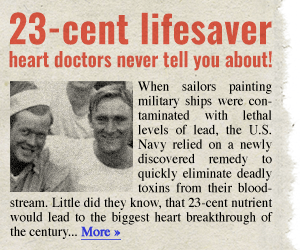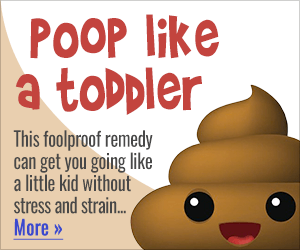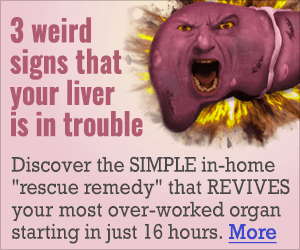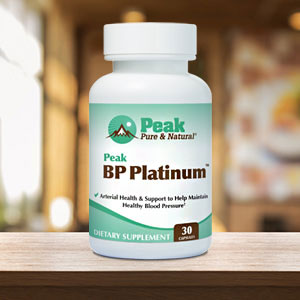Get Easy Health Digest™ in your inbox and don’t miss a thing when you subscribe today. Plus, get the free bonus report, Mother Nature’s Tips, Tricks and Remedies for Cholesterol, Blood Pressure & Blood Sugar as my way of saying welcome to the community!
The major impact of mini-stroke on the brain

Having a stroke can derail your life within minutes, causing permanent brain damage that can steal your ability to communicate or to live independently.
But what many people don’t realize is that a stroke doesn’t always occur out of the blue. Just as often, your body gives you a tap on the shoulder that says, “Hey! Take care of this now, or worse things are coming!”
One of these warning signs is known as a “mini-stroke.”
But there’s nothing “mini” about it.
If you have one of these mini strokes, research says that it’s only a matter of time until another, possibly more damaging, stroke can occur… unless you heed the warning your body is giving you.
TIA is a warning that leaves its mark
When you have the most common type of stroke — ischemic stroke — blood flow to the brain is cut off, either by a blood clot or plaque from artery walls. Hemorrhagic stroke is caused by a burst blood vessel. These types of strokes can cause significant damage, even death.
Then, there’s what’s known as a mini-stroke, more technically called a trans-ischemic attack.
When someone experiences a TIA, blood flow to the brain is blocked only for a very brief period, but the symptoms are the same as those for a major stroke:
- Sudden weakness or numbness on one side of the body
- Difficulty speaking or understanding speech, or both
- Vision problems
- Dizziness
- Loss of coordination and balance
Unlike a major stroke, TIA symptoms typically resolve within minutes — most within an hour. And that’s what makes a TIA so dangerous…
You see, many people ignore TIA symptoms once they feel normal again, not realizing that it could be only weeks before they fall victim to a full-blown stroke.
According to the Mayo Clinic, about 1 in 3 people who have TIAs go on to have a stroke. And the risk of stroke is exceptionally high within 48 hours of a TIA.
But that’s not the only concern from TIA…
An extensive epidemiological study by researchers at the University of Alabama at Birmingham found that the impact on the brain in terms of cognitive decline is concerning.
Immediately after a TIA, “we don’t see an abrupt change in cognition,” as measured by cognitive tests administered every other year,” says Dr. Victor Del Bene, a neuropsychologist and lead author of the study.
Five years later, the picture was different. People who had experienced TIAs were cognitively better off than those who had suffered strokes. But both groups were experiencing cognitive decline — and at equally steep rates.
“If you have one stroke or one TIA, with no other event over time and no other change in your medical status, the rate of cognitive decline is the same,” said Dr. Del Bene.
Mini-stroke requires FAST attention
Unlike other urgent conditions, a TIA may not appear dramatic or even be visible; patients themselves must determine how to respond.
Dr. Claiborne Johnston, a neurologist and chief medical officer of Harbor Health in Austin, Texas, commented:
“Feeling back to normal doesn’t mean you can ignore this, or delay and discuss it with your primary care doctor at your next visit,” Dr. Johnston says.
That means symptoms should prompt a 911 call and an immediate evaluation in the emergency room.
So, how do you know if you or a loved one is having a TIA?
Dr. Tracy Madsen, an emergency room specialist at the University of Vermont, believes in the acronym BE FAST — the same advice in case of a full-blown stroke:
- Balance loss
- Eyesight changes
- Facial drooping
- Arm weakness
- Speech problems
The T is for time, as in don’t waste any.
It’s important to know that women can present with very different stroke symptoms.
The bottom line: Go with your gut. If something’s off, seek help.
But knowing that a TIA can eventually lead to the same decline as a major stroke should be a wake-up call to all of us. It’s a perfect example of why prevention truly is the best medicine.
This does not matter whether you are young or old. Stroke is on the rise among people under the age of 65. You can read more about that here and find advice on a stroke prevention lifestyle.
Editor’s note: What do you really know about stroke? The truth is, only 10% of stroke survivors recover almost completely, and all doctors can offer is what to do after a stroke occurs. That’s unacceptable considering 80% of strokes are preventable! Click here to discover how to escape The Stroke Syndrome: 5 Signs it’s Stalking You — Plus the Hidden Causes and Preventive Measures You’ve Never Heard About!
Sources:
A Mini-stroke Can Have Major Consequences — KFF Health News
Cognitive Decline After First-Time Transient Ischemic Attack — JAMA Neurology
First-Time Transient Ischemic Attack Associated With Long-Term Cognitive Decline — doc wire news
First-Time TIA Associated With Long-Term Cognitive Impairment — Breaking Med














